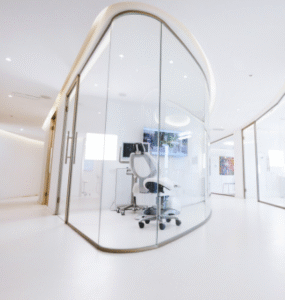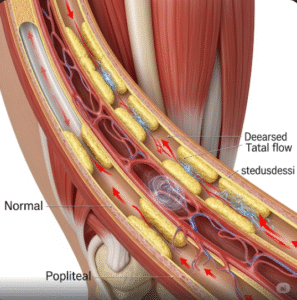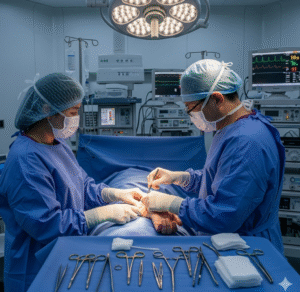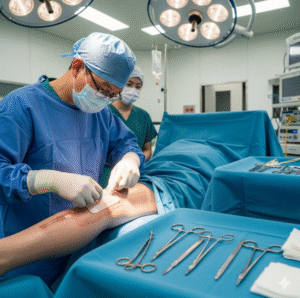Overview
Cataplexy is a neurological condition characterized by sudden, temporary loss of voluntary muscle tone triggered by strong emotions such as laughter, surprise, anger, or excitement. It is most commonly associated with narcolepsy type 1, a chronic sleep disorder.
In South Korea, neurology and sleep medicine clinics provide diagnostic evaluations, treatment options, and lifestyle guidance for cataplexy, aiming to improve quality of life and reduce the risk of injury due to sudden muscle weakness.
Key Facts
Highlights:
➡️ Cataplexy episodes typically last seconds to a few minutes.
➡️ Emotional triggers such as laughter, anger, or surprise often precipitate attacks.
➡️ Cataplexy is strongly linked to narcolepsy, especially when accompanied by excessive daytime sleepiness.
➡️ Not all narcolepsy patients experience cataplexy, but its presence confirms narcolepsy type 1 diagnosis.
➡️ South Korea offers advanced sleep studies, neurologic evaluation, and pharmacological therapy to manage cataplexy effectively.
What is Cataplexy?
Cataplexy is a sudden, involuntary muscle weakness that may affect:
- Face: Drooping eyelids, slack jaw, or facial muscle weakness
- Limbs: Weakness in arms or legs, sometimes causing collapse
- Neck or trunk muscles: Brief inability to stand or maintain posture
Key characteristics:
- Preserved consciousness during attacks; the person remains aware.
- Triggered by emotions, most often laughter or surprise.
- Frequency varies, ranging from rare episodes to multiple daily attacks.
- Severity can vary, from mild facial drooping to full-body collapse.
Although cataplexy itself is not life-threatening, falls or accidents during attacks can cause injuries.
What Symptoms are Related to Cataplexy?
Symptoms during cataplexy episodes may include:
- Sudden weakness in face, neck, or limbs
- Drooping eyelids or slack jaw
- Difficulty speaking or holding objects
- Collapse or buckling of knees in severe episodes
- Preserved awareness, unlike seizures where consciousness is impaired
- Episodes triggered by strong emotions such as laughter, anger, or excitement
Highlights:
➡️ Cataplexy is distinct from fainting or seizures because consciousness is maintained.
➡️ Mild attacks may be unnoticed or manifest only as facial drooping.
➡️ Severe attacks can lead to falls, so safety precautions are important.
What Causes / Possible Causes of Cataplexy?
Highlights:
➡️ Narcolepsy Type 1: The most common cause, involving loss of hypocretin-producing neurons in the brain.
➡️ Genetic Factors: Certain HLA (human leukocyte antigen) types increase susceptibility.
➡️ Autoimmune Mechanism: Cataplexy may involve an autoimmune attack on brain neurons responsible for regulating muscle tone.
➡️ Triggers: Strong emotions such as laughter, anger, surprise, or stress precipitate attacks.
➡️ Mechanism: Loss of hypocretin (orexin) disrupts REM sleep regulation, causing sudden muscle atonia during wakefulness.
➡️ Other Rare Causes: Secondary cataplexy can occur after brain injury, tumors, or neurological disorders affecting hypothalamic regions.
When Should I See My Doctor?
Highlights:
➡️ If you experience sudden, emotion-triggered muscle weakness, especially if it affects daily life.
➡️ If episodes are accompanied by excessive daytime sleepiness, as this may indicate narcolepsy.
➡️ If attacks cause falls or injury risk.
➡️ Early evaluation allows diagnosis via sleep studies and neurological assessment, guiding treatment and safety measures.
➡️ Proper management improves quality of life and reduces complications from falls.
Care and Treatment
Management focuses on reducing the frequency and severity of cataplexy episodes and addressing underlying narcolepsy:
Highlights:
➡️ Medications:
- Sodium oxybate to reduce cataplexy episodes and improve sleep quality
- Antidepressants (SSRIs, SNRIs, tricyclics) to suppress REM sleep and prevent attacks
➡️ Behavioral Strategies:
- Avoiding emotional triggers when possible
- Safety measures to prevent falls, such as supportive seating or handrails
➡️ Sleep Hygiene:
- Maintaining a regular sleep schedule
- Scheduled naps to reduce daytime sleepiness
➡️ Supportive Care:
- Patient education on recognizing triggers and managing episodes
- Counseling and support groups for coping with narcolepsy and cataplexy
➡️ Monitoring: Regular follow-up with neurologists or sleep specialists to adjust therapy and evaluate response.
Treatment Options in Korea
South Korea provides comprehensive care for cataplexy and narcolepsy:
Highlights:
➡️ Sleep Medicine Clinics: Polysomnography and Multiple Sleep Latency Tests (MSLT) for accurate diagnosis.
➡️ Neurology Centers: Expert management of cataplexy with pharmacologic therapy and follow-up.
➡️ Behavioral Therapy Programs: Guidance on lifestyle adjustments and safety strategies.
➡️ Multidisciplinary Approach: Collaboration among neurologists, sleep specialists, psychologists, and primary care physicians.
➡️ Patient Education: Counseling on triggers, coping mechanisms, and safe daily routines.
➡️ Medical Tourism Support: Multilingual consultations, diagnostic sleep studies, and ongoing treatment for international patients.












